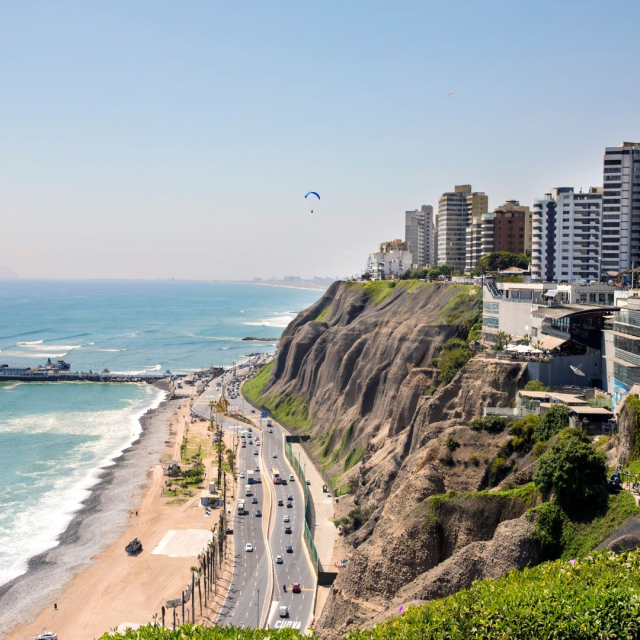Every January 18th, Lima, the capital of Peru, dresses up to commemorate its founding anniversary. This date marks the founding of the “City of Kings” in 1535 by the Spanish conquistador Francisco Pizarro. This anniversary is much more than a simple celebration: it is an opportunity to pay tribute to the rich history, vibrant culture, and deep traditions that make Lima a unique city in Latin America. Throughout this article, we will explore the meaning of Lima’s anniversary, the festivities that accompany it, and the impact of this commemoration on the Lima and Peruvian identity.
A Little History: The Beginnings of Lima
Lima was founded on January 18, 1535 by Francisco Pizarro, who decided to establish a city on the central coast of Peru due to its strategic position and proximity to the Rimac River. The city was named "City of Kings" in honor of the Three Wise Men, since the decision to found it coincided with the celebration of the Epiphany.
Since its founding, Lima has become an important political, economic and cultural centre of the Viceroyalty of Peru. During the colonial period, it was known as "the Pearl of the Pacific" due to its prosperity and architectural beauty. Today, Lima is a modern metropolis that combines its rich historical heritage with the dynamics of a contemporary city.
The Meaning of Lima's Anniversary
Lima's anniversary is an occasion to reflect on the city's historical legacy and celebrate the cultural diversity that characterizes its inhabitants. It is a time to highlight the city's achievements over the centuries and to project a vision for the future that preserves its identity while facing the challenges of development and modernization.
Festivities and Events
Lima's anniversary is celebrated with a wide range of cultural, artistic and recreational activities involving all sectors of society. Among the most notable activities are:
1. The Serenade to Lima
On the evening of January 17, Lima's Plaza Mayor becomes the main stage for a serenade in honor of the city. This event includes presentations of Creole music, typical dances and fireworks displays. It is an opportunity for Lima residents and visitors to celebrate together to the rhythm of traditional music.
2. Parades and Processions
On January 18, the streets of Lima's historic center are filled with color and joy with parades and street performances that showcase the city's cultural wealth. Folkloric dance groups, music bands and comparsas parade through the main avenues, delighting the public with their costumes and choreographies.
3. Exhibitions and Cultural Events
Museums, art galleries and cultural centers organize special exhibitions that highlight the history and culture of Lima. These activities range from exhibitions of colonial and contemporary art to workshops on gastronomy and traditional crafts.
4. Gastronomic Festival
Lima, considered the gastronomic capital of Latin America, celebrates its anniversary with a gastronomic festival that offers a sample of its diverse and exquisite cuisine. Visitors can taste emblematic dishes such as ceviche, causa limeña, lomo saltado and anticuchos, among others.
5. Sports and Recreational Activities
To encourage citizen participation, sports activities such as marathons, bike rides and football tournaments are organized. These initiatives promote a healthy lifestyle and strengthen the sense of community.
Lima: A City of Contrasts
Lima is a city that combines the old with the modern, the traditional with the contemporary. Its Historic Centre, declared a World Heritage Site by UNESCO in 1988, is home to architectural gems such as the Lima Cathedral, the Convent of San Francisco and the Plaza Mayor. At the same time, the city has modern neighbourhoods such as Miraflores and San Isidro, known for their skyscrapers, parks and nightlife.
Lima's cultural diversity is reflected in its population, which includes descendants of indigenous people, Europeans, Africans and Asians. This ethnic and cultural mix has given rise to a rich culinary, artistic and musical tradition that is a source of pride for its inhabitants.
Challenges and Opportunities
Despite its many achievements, Lima faces significant challenges. Traffic congestion, environmental pollution and social inequalities are problems that affect the city and require innovative solutions. Lima's anniversary is also an opportunity to reflect on these issues and promote sustainable and inclusive development.
As the capital of Peru, Lima plays a crucial role in the country's political, economic and cultural life. It is Peru's main international hub and a meeting point for visitors from around the world. In addition, its cuisine and music have gained global recognition, consolidating it as a top-level tourist destination.
Lima’s anniversary is much more than a date on the calendar; it is a celebration of the history, culture and traditions that make this city a special place. Every January 18, the people of Lima come together to honor their past, celebrate their present and look with hope to the future. In a constantly changing world, Lima remains a testament to resilience, creativity and diversity, values that make it a jewel of Peru and Latin America.
